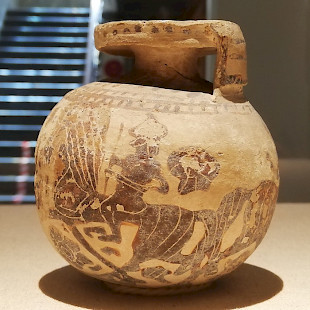Sabines
Q108356Sabines (Greek: Σαβῖνοι): ancient people, living in the valley of the river Tiber.

In the course of the Iron Age, the people of Central Italy, who had been living in hilltop settlements, increasingly started to live in larger groups, often consisting of several older settlements. In the coastal area, with access to the sea and easy roads on the plains, this process culminated in the growth of real cities, like Antium, Satricum, archaic Rome, Praeneste, Veii, and Caere. In the hilly interior, this process was a bit slower, but larger political units were created as well, which are often, for lack of anything better, labeled as "tribal". From north to south, we can discern four people: the Sabines in the valley of the river Tiber, the Aequi, the Hernici in the valley of the Tolerus (or Trerus) River (modern Sacco), and the Volsci.
The Sabines, who appear to have spoken an Osco-Umbrian language, are often mentioned in the history of early Rome, most famously in the story of the Rape of the Sabine Women. We read about several wars and two Sabine kings ruling in Rome, Romulus' colleague Titus Tatius and Romulus' successor, the wise Numa Pompilius. King Ancus Marcius was of Sabine descent as well.
The powerful kings of Rome (e.g, Tarquin the Proud) were able to keep those tribes away, but after the collapse of the Roman monarchy in the final decade of the sixth century, the Aequi and Volsci started to migrate to the plains. It would appear that the Sabines did not join this migration, except for one family, the Claudii, who settled in Rome and were to be one of the main patrician families in the history of the Roman Republic.
The Sabines, who had access to the trade networks of Etruria and Latium because they were living near the Tiber River and along the Via Salaria, eventually created cities of their own (e.g., Reate). After the mid-fifth century, they vanish from Italian history. This means that the Romans, who wrote most our sources, start to distinguish towns, and no longer use the generalizing expression "Sabines". It may also mean that the Sabines were no longer cooperating under one leader, the meddix.
Of course the region remained known as "country of Sabines". It is probably in this sense that Livy records a revolt, suppressed by consul Curius Dentatus, who defeated the Sabines and Samnites in one war (290 BCE).note